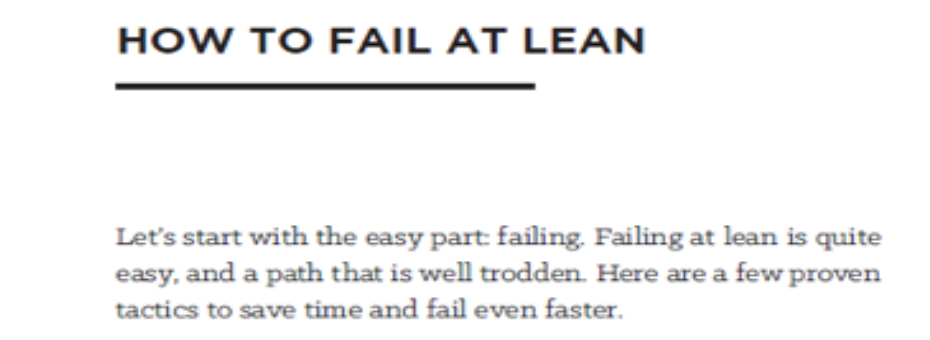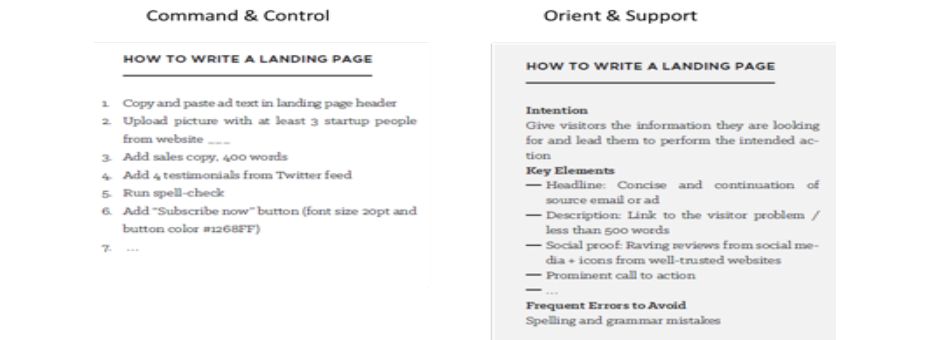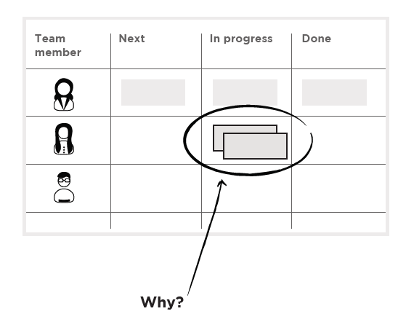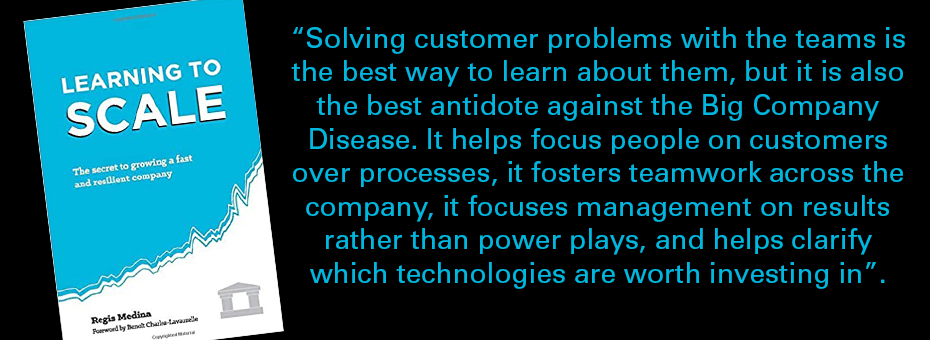How can young companies in today’s world emerge and learn from our past trial and errors? Furthermore, how can they show us the way to a growth that is both sustainable and respectful of people and planet?
Regis Medina is targeting to do just that: bet on young companies now emerging everywhere in the world. Yesterday’s start-ups, some of them pure disrupters, are growing and scaling-up. But growing too fast can take its toll and lure you to a realm of complexity and vicissitude. Regis has written a practical field guide, Learning to Scale, The Secret to Growing a Fast and Resilient Company, that demonstrates both the why and the how of what he professes. Largely inspired by The Lean Strategy by Balle, Jones, Chaize and Fiume, and by light-footed behemoths such as Toyota, Amazon or Pixar, he shares lessons from his years of experience to those emerging CEOs, COOs, and CTOs. He has successfully translated each concept of the TPS and lean strategy into a clear and practical guidance for today’s digital world.
I can see 12 reasons why you should read this book.
Reason 1: Lean, the book demonstrates, is a strategy of business and customer satisfaction continuity whatever the external challenges. In the current context, this book is a must.
Reason 2: The author bridges daily top management questions with what lean or TPS can offer. He constantly poses the question: “What’s in it for me?” Regis says he wrote the book for company leaders; people who would be suffocated by problems, longing for the fun of the early days, and eager to read something targeted to them. Accordingly, book addresses such questions as how to improve performance for customers without adding excessive pressure on teams, how to attract and retain talent or how to industrialize operations without inhibiting creativity. As Regis says, “you can consider lean and the TPS as a 20-year shortcut in your own career as a manager.”
Reason 3: The book explicitly addresses the challenge of mitigating the complexities that emerge from growth, citing Michael Ballé’s iron law of scale-ups: “with fast growth, silo and complexity costs increase faster than revenues”. Most scale-up leaders will recognize their difficulties in the description Regis gives of a growing company. With increasing complexity, one could be tempted, and often is, to implement more control: the book will provide you with great illustrations of the negative impacts the author has observed on morale, talent, innovation, revenue and profit when this path is taken. “Lean is not about who gets the control, or how we organize work, it’s about how we think about it. It’s not a production system, it’s an education system”.
Reason 4: The book is an ongoing demo of how lean serves as a countermeasure to Big Company Disease.
“Solving customer problems with the teams is the best way to learn about them, but it is also the best antidote against the Big Company Disease,” he writes, “It helps focus people on customers over processes, it fosters teamwork across the company, it focuses management on results rather than power plays, and helps clarify which technologies are worth investing in.”
Reason 5: Learning to Scale points out a few prevalent misconceptions in the business world.
For example, thinking of customers as segments or personas. “The trap here is to think in terms of abstractions… Digging deep into the expectations of each customer will uncover opportunities to create more value and accelerate growth.”
He also dismisses the misapprehension idea that variability in the job is great news, that it fosters creativity and makes work more interesting. Far from it, he argues; creativity and innovation stem from stabilized standards and a levelled pace of production that free the minds for something different.
Reason 6: The text is witty.

Reason 7: The book translates Toyota’s great intuition on lead time and jidoka into plain modern language.
“Lead-time reduction acts as a powerful detox plan: problems are surfaced, ready to be resolved. As problems are eliminated and lead time is reduced, the financial health of the company improves:
- With shorter lead times, the business can function with less cash.
- With fewer problems, operational costs decrease.”
Reason 8: It focuses on learning as a key dimension of a lean strategy, with TPS as a mental model.
“Placing learning at the center of the strategy is not just a matter of company slogans and wishful thinking. It’s about developing two specific know-hows:
- Actively looking for what we don’t know that limits our performance
- Actively developing the knowledge and skills of everyone”
Regis also explains how we, adults, learn:

To conclude with the very basic consequences of that rule: we tend to learn more about topics we like and feel comfortable with and we avoid other less likeable topics, we want to practice what we have just learned (which means we need to pull the learning sessions rather than push them), we need autonomy to try things and we need to feel safe.
Reason 9: The book provides great comparative illustrations between the ‘command & control’ stance versus the ‘orient & support’ approach the author advocates. For example, on work standards:

Reason 10: The author acknowledges and addresses possible objections. On problem solving, for examples, he delves into why hard facts should systematically win over feelings, which are common occurrence in daily interactions. Or whether cycle time and takt time apply to high tech activities.
Reason 11: The approach is very practical. On one-piece-flow, for example, the author will confirm the theory, agree that “one-piece flow is a destination, a north star”, not an immediate objective, and provide practical exercises to get started.

Practice is by the way advocated, a personal practice of improvement. Lean is more of a “do first, understand later” approach.

And the book ends with lists of concrete exercises:

Reason 12: It’s a just-in-time book with an on-demand printing. No stock, the planet is preserved, and the text can be adjusted before each new print and is therefore open to kaizen, as any of our human productions should be.





